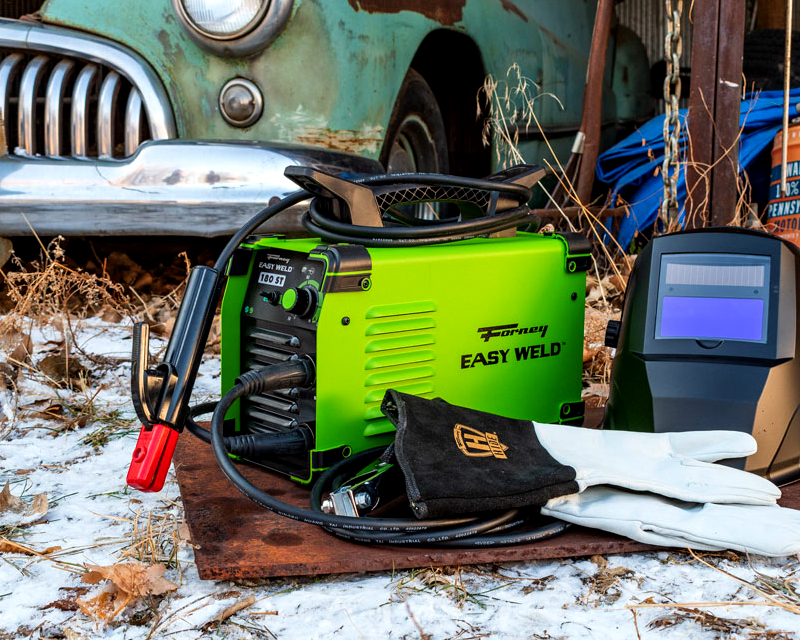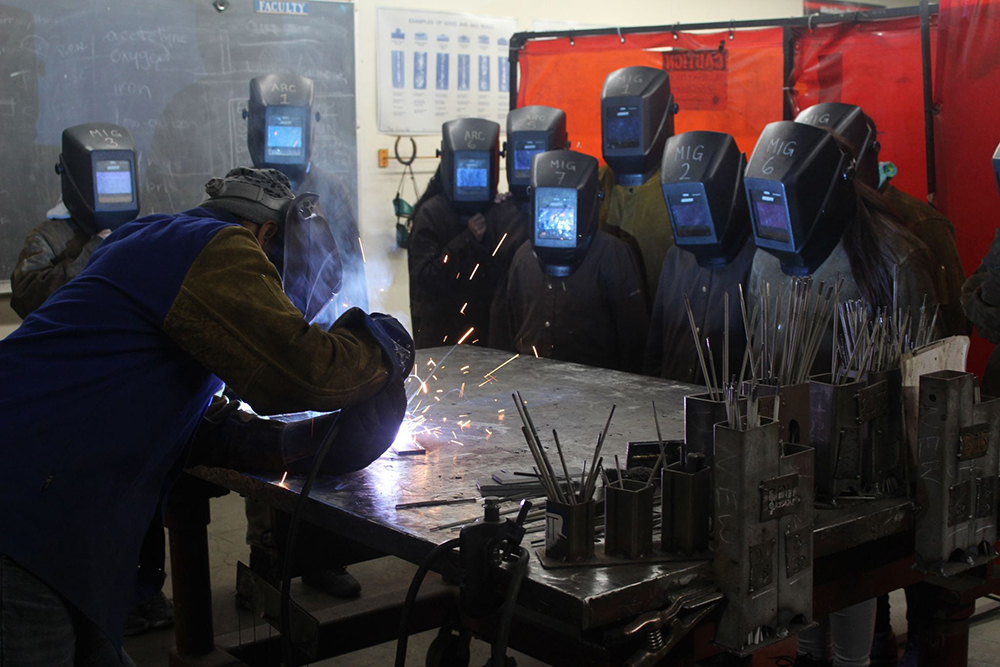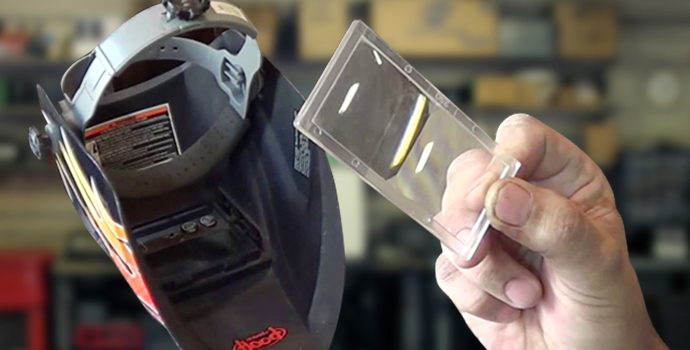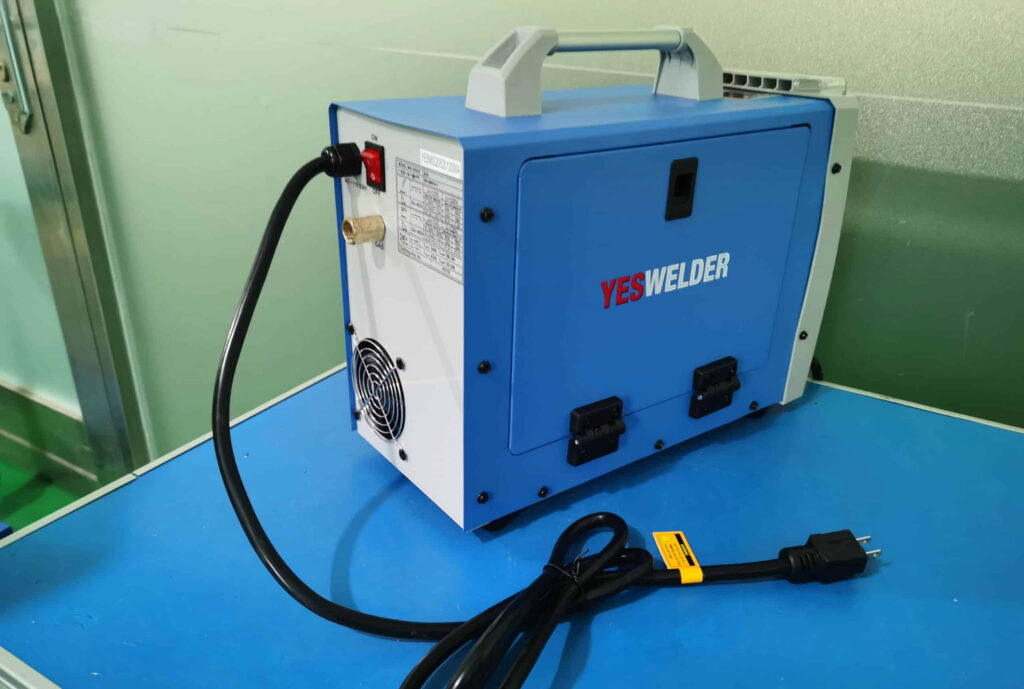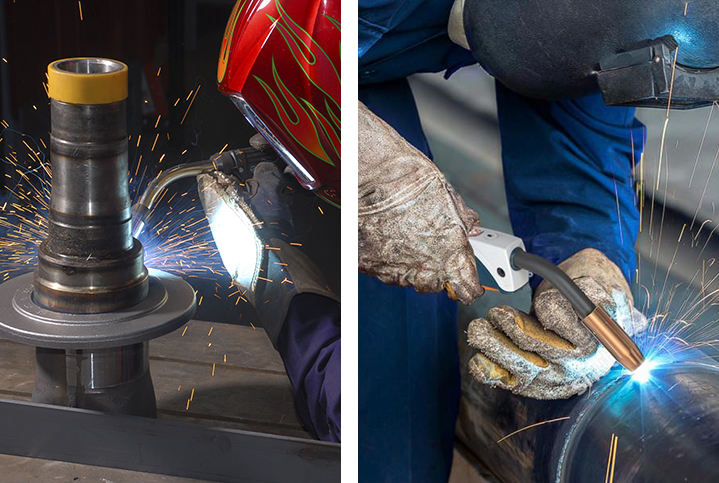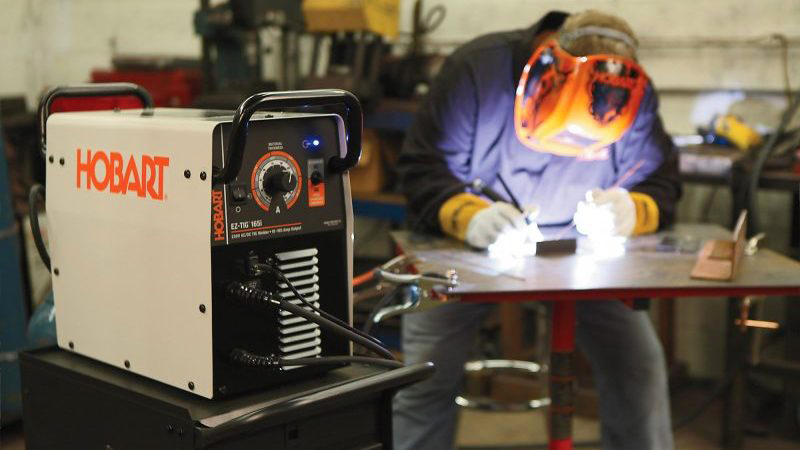

Flux core welders tend to offer better penetration making them ideal for attaching thicker metals. As such, a flux core welder is a major part of most welding shops. That said, not all flux core welders are built the same. The best flux core welders differ from others where the extra welding processes available, the input required, the device’s power output, duty cycle, and wire diameters they work with are concerned.
If you know your welding basics, you know these features are influential in how each device can be used, and they even affect the user experience. We examined the features and functionality of these devices in our efforts to rate and rank some of the best flux core welders. The results are as seen below.
Where flux core devices are concerned, the Hobart 500559 Handler is a top-tier option for the money, especially if you’re a home welder. This is because the standard input voltage is 115V which should be in line with what is present in most home sockets. The device works with flux-cored wire in the 0.023–0.035 in. thickness range and can weld up to ¼ in. steel. However, that isn’t the only material it works with. It also works with stainless steel and even aluminum which can be tricky to weld. As for the machine’s output, it ranges from 25 to 140A with a duty cycle of 20% at 90A. Consequently, it may not be suited to industrial work even from the choice of input voltage used. Nevertheless, it can handle home welds quite well. Notably, the Hobart 500559 Handler can also be considered a multi-process welder since it allows for MIG welding as well.
The Hobart 500559 Handler is for the home welder looking for a well-made flux-core welding machine that works with home sockets.
For a home device, the Lincoln Electric Easy MIG 180 K2698-1 is quite the performer due to the 230V input required. As such, if you already have the electric infrastructure in place in your workshop, this machine could be ideal for taking advantage of it. However, you can still get it if you plan on making the upgrade. Notably, this is also a multi-process welder, given that it supports MIG welding. That said, the performance for MIG welding and flux-cored welding differs. With the former, you can weld up to 3/16 in. metal. As for the latter, you max out at ½ in. Also, the amperage output range for the K2698-1 stands between 30 and 180A. Finally, an impressive 30% at 130A is what you get where the duty cycle is concerned.
The Lincoln Electric Easy MIG 180 K2698-1 is the flux-cored welder you get if you want extra performance and are willing to pay a bit extra to get it.
In terms of multi-process welding capabilities, the Forney Easy Weld 140 MP is one of the most impressive flux-core welders in the market and, by extension, in this list. It supports stick, MIG, DC TIG, and the reason for its inclusion on the list, flux-core welding. The features for this welder don’t stop there. It incorporates a switch so you can change the welding process seamlessly. Next, there are infinite wire feed speed and voltage controls that allow you to dial in your settings for the best welding results. Notably, it connects and works well with typical home wiring and will thus be a plug-and-play device once it arrives at your workshop. Also, although they differ, the duty cycles for the different welding processes are pretty impressive. That said, some accessories you may need, e.g., a regulator and gas hose, are not included.
This welder is for users who want multi-process functionality in a lightweight, affordable device.
The LOTOS MIG140 is another inclusion that plugs into your standard home wall socket like the Hobart 500559 Handler. The design of this welder incorporates knobs for adjusting the voltage and wire feed speed which are coupled with digital displays that show the settings you’re using. In addition to flux core, the device also offers MIG welding and can weld metals in the 24 gauge to 3/16” size range. However, it doesn’t perform as well when it comes to aluminum as it can only weld 1/8” or thinner. The duty cycle stands at 20% @ 90A, and although this isn’t very impressive, it’s enough for home repairs and projects. Additionally, it comes with an aluminum wire feeder that, on paper, offers stability and durability. However, in practice, it works differently as there are some issues that present themselves, especially if you use low-quality wire.
The LOTOS MIG140 is an excellent purchase if you want the ability to switch between manual and semi-automatic welding with the flick of a button.
Next is the Eastwood MIG 140, a 25.15-pound machine and thus one of the lightest devices listed. So, this welding machine will be the most convenient to transport. That said, it does plug into typical 120V household outlets. Some accessories packaged with the welder include a ground cable and clamp. Additionally, this flux-core welder comes with a simple control panel interface consisting of a single on/off switch and two knobs. The wire diameter compatibility depends on the material you’re using and the welding process. Additionally, it features the metal drive motor for the smoothest operation and 2T/4T modes for comfort during long welds. The ranges include 0.023”(0.6mm) – 0.035”(0.9mm) MIG wire0.030”(0.8mm) – 0.035”(0.9mm) flux core wire.
This machine is for beginning users who want to weld without any modifications to their workshop.
As for the Forney Easy Weld 261 140 FC-i device, it’s extremely lightweight, weighing in at only 19 lbs. Like a few other flux-core welders listed, it comes with a two-knob interface that’s simple to understand. The knobs in question are for controlling the wire feed speed and voltage. Additionally, it features an all-metal case despite being as light as it is. Some welding accessories included are the ground clamp, MIG gun, integrated handle with torch wrap, and more. As for the capabilities, they include a 30% duty cycle at 90A and 20-140A output. Lastly, you can use 0.030 – 0.035 in. wire with the machine. Worth mentioning is the device only works for gasless flux-cored welding, hence the regulator’s omission from the list of accessories.
If you want a lightweight and inexpensive welder, the Forney Easy Weld 261 140 FC-i is for you.
There are a couple of reasons to go for a flux core welder. According to the Tulsa Welding School, Trusted Source Uses and Advantages of Flux-Core Arc Welding - Tulsa Welding School Knowing the advantages and limitations of different welding techniques is essential for professional welders. The unique properties of FCAW gives it a few advantages over other techniques. www.tws.edu they include one, the minimal skill level required to pull off flux-cored welding successfully. You don’t need expert-level knowledge or to have undergone lots of training to start flux core welding.
Next, it offers lots of flexibility, especially with how you hold the torch as well as the direction of travel. This means it will be easier to use for repairs, even for those in tight spaces. The deposit rate is another positive attribute of this welding process. It’s the highest among all welding processes available, and this makes it ideal for large projects.
Lastly, there’s greater penetration compared to other welding processes.
Picking the best flux-core welder is a delicate process that involves weighing the device’s pros and cons against your needs. Consequently, you’ll need to look at the types of welding processes available, the input voltage, amperage range, duty cycle, portability, among other features. Further details on that below.
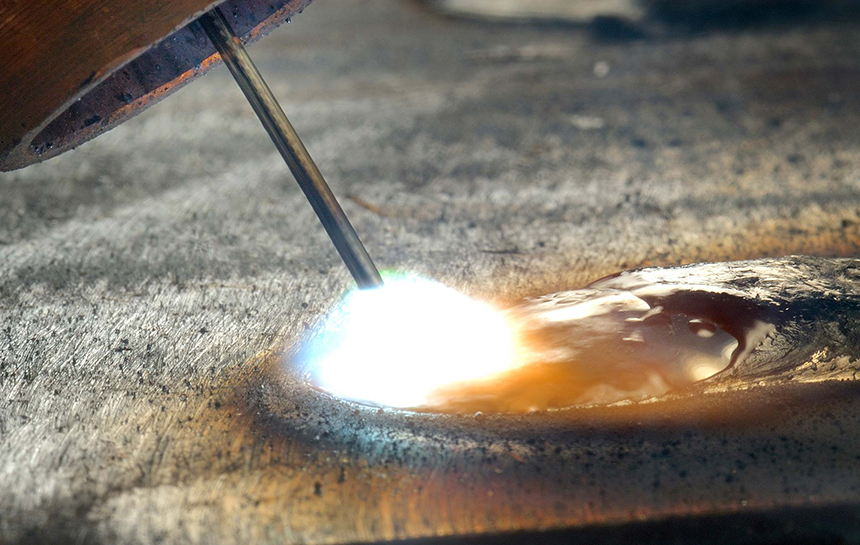
Just because a welder is a flux core machine doesn’t mean that other welding processes are not included in the package. Data from the New England Institute of Technology Trusted Source 4 Different Types of Welding Processes 2021 - NEIT Learn about the four main types of welding processes like gas metal arc welding, gas tungsten arc welding, shielded metal arc welding and flux cored arc welding. www.neit.edu shows there are four main welding processes, including flux-cored arc welding. The other three are shielded metal arc welding, gas tungsten arc welding, and gas metal arc welding.
A product like the Forney Easy Weld 140 MP offers some of the best value in this regard since all four of these welding processes are included. However, it’s more common for flux core welders to be bundled with MIG capabilities.
The input voltage technically determines the type of outlet and wiring that are compatible with the device. Of course, this affects the welder’s performance as well. There are two options. The 120V and the 240V.
For most industrial-level welders they require 240V outlets. These are typically not common in the American household. However, they do have the power needed to run heavier appliances.
You might even find one in the kitchen.
However, if the welder is for a workshop setting, you might need to upgrade your electrical setup to support it. The 120V in models like the Eastwood MIG 135 means you can plug and use the device in almost any home setting.
As for the amperage range, it’s how much the welder can output once it’s up and running. Notably, it’s another way to predict the device’s performance because more power is needed to weld thicker materials.
It’s also why the device with the highest amperage limit on the list, the Lincoln Electric Easy MIG 180 K2698-1, is the only one that can weld ½” metal.
Duty cycle is another term you should know if you’re familiar with welding lingo, and it should be on your checklist for a welder purchase. It determines how long the machine runs at a particular output rating without needing to cool down. Often the duty cycle is given as a percentage of a 10-minute rotation.
For instance, in the LOTOS MIG140, the duty cycle is 20% at 90A. This means if you dial the amperage to 90A, the device will work for two minutes and rest for eight before you can have another go at your project. Of course, welders with higher duty cycles are therefore more convenient and easy to use.
You might want to check the average size and type of the metals you want to weld. The most common weldable materials include steel, mild steel, and aluminum. That way, you can pick a welder with the right capabilities.
For instance, choosing the Eastwood MIG 135 would be a bad idea if you intend on welding aluminum as the device is not capable. However, if the plan is only to weld mild steel, the machine will work just fine.
The same is the case for material thickness. If the goal is to work with thicker metals, go for a device with a higher output range that offers better penetration in a single pass.
That said, most manufacturers indicate the material thickness their offering can handle.
Thick and thin wires have different attributes which can affect how they’re used. Thin wire, for instance, feeds at higher speeds, while the reverse is true for thicker wires. As such, it’s always good to have both options so you can switch between them in response to the requirements of each job. Of course, this will be dictated by the machine’s wire and reel diameter range.
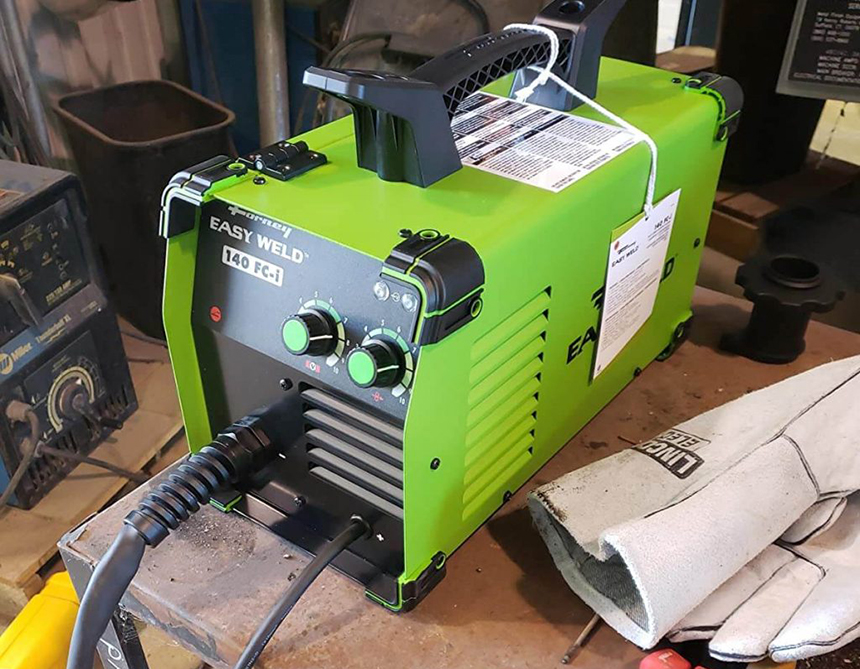
Portability isn’t a factor for many home welders since most people only intend to use them in their workshops. However, portability might be important if you take your machine out on the road for repairs and projects. Ideally, the welder shouldn’t weigh much and should be compact enough to fit small spaces, including the trunk of your car. Options like the Forney Easy Weld 261 140 FC-i, which only weighs 19 pounds, are thus better suited for this kind of use.
The more favorable the terms for your warranty are, the better for you. As such, always look to see if you can get three-year coverage over one year or five-year coverage over three years. That way, you get the most bang for your buck, and your investment is protected for longer. Of course, the warranties provided for welders differ from manufacturer to manufacturer and sometimes even from model to model in the same product lineup.
The price of a welder is always among the top considerations, mainly because you have to pay for the device. Affordability is relative, and what may be affordable to you may be expensive for someone else. Try to buy a welder within your means and even check the value for money you’ll be getting by comparing each device with others in a similar price range.
Extra features are also a common occurrence where the design of flux core welders is concerned. One example is where the LOTOS MIG140 is concerned. With it, you can switch between manual and semi-automatic welding at the flick of a button. Another example is the inclusion of charts that help you determine the settings for welding certain metals. Of course, if you want more value for money, you get the welder with the most extra features in your price range.
Where gasless flux core welding is concerned, the weld is protected by the slag produced by the flux core component of the wire. This is ideal for windy conditions. Where gas is used, the weld get’s an extra layer of gaseous protection until it cools. Of course, this option may not work in windy conditions.
So, the short answer is no, you don’t need gas when welding with flux core.
Our top three flux core welders from the list above include the Hobart 500559 Handler, Lincoln Electric Easy MIG 180 K2698-1, and the Forney Easy Weld 140 MP. The 500559 Handler makes it so high up on the list because Hobart machines have a reputation for reliability. It’s also designed for easier use in a home setup.
On the other hand, the Lincoln offers more power, better weld penetration, and even the ability to weld thicker materials. Another contender for the top spots on our list of best flux core welders is the Forney Easy Weld 140 MP. This pick offers flexibility, especially where the welding process is concerned. You can use all four major welding processes with just the flick of a button. Ultimately, what remains is to get your funds right and to pick an option for purchase.
